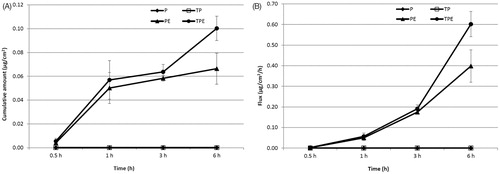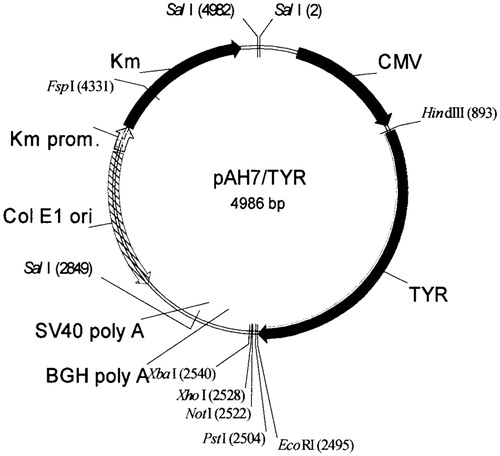Figures & data
Figure 2. TEM images of the PE (A) and TPE (B) in the gel formulations at the magnification of ×20 000.
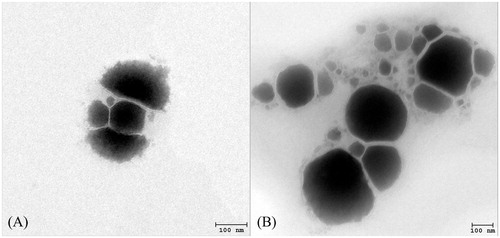
Table 1. Viscosity values (cP) of tyrosinase plasmid (pAH7/Tyr, P), Tat/tyrosinase plasmid complexes (TP), tyrosinase plasmid-loaded elastic cationic niosomes (PE) and Tat/tyrosinase plasmid/elastic cationic niosomes complexes (TPE) gel formulations.
Figure 3. Rheology behavior of (A) gel base, (B) E gel, (C) P gel, (D) TP gel, (E) PE gel and (F) TPE gel.
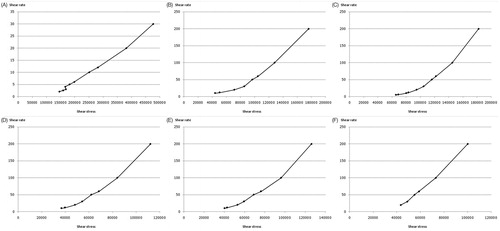
Figure 4. Percentages remaining of the human tyrosinase plasmid (pAH7/Tyr) in free plasmid (P), Tat/tyrosinase plasmid (TP), tyrosinase plasmid-loaded elastic cationic niosomes (PE) and Tat/tyrosinase plasmid/elastic cationic niosomes (TPE) solution and gel formulations kept at 4 ± 2 °C, 25 ± 2 °C and 45 ± 2 °C for 3 months. The * indicates significant (p < 0.05) difference of the percentages remaining of the plasmid compared to the initial (100%).
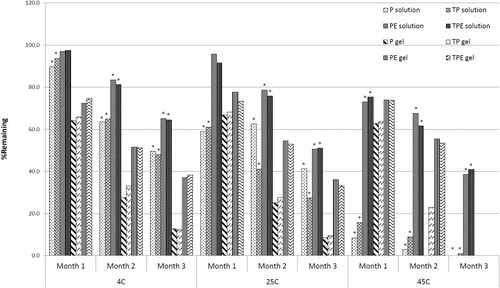
Table 2. Vesicular sizes and zeta potential values of tyrosinase plasmid (pAH7/Tyr, P), Tat peptide (T), blank elastic cationic niosomes (E), Tat/tyrosinase complexes (TP), tyrosinase plasmid loaded elastic cationic niosomes (PE) and Tat/tyrosinase plasmid/elastic cationic niosomes complexes (TPE) at initial and at 4 ± 2 °C, 25 ± 2 °C and 45 ± 2 °C after three months of storage.
Figure 5. Cumulative amounts (A) and fluxes (B) of the pAH7/Tyr in viable epidermis and dermis of free tyrosinase plasmid (P), Tat/tyrosinase plasmid (TP), tyrosinase plasmid-loaded elastic cationic niosomes (PE) and Tat/tyrosinase plasmid/elastic cationic niosomes (TPE) solution formulations.

Figure 6. Cumulative amounts (A) and fluxes (B) of the pAH7/Tyr in the receiving solution of free tyrosinase plasmid (P), Tat/tyrosinase plasmid (TP), tyrosinase plasmid-loaded elastic cationic niosomes (PE) and Tat/tyrosinase plasmid/elastic cationic niosomes (TPE) solution formulations.
